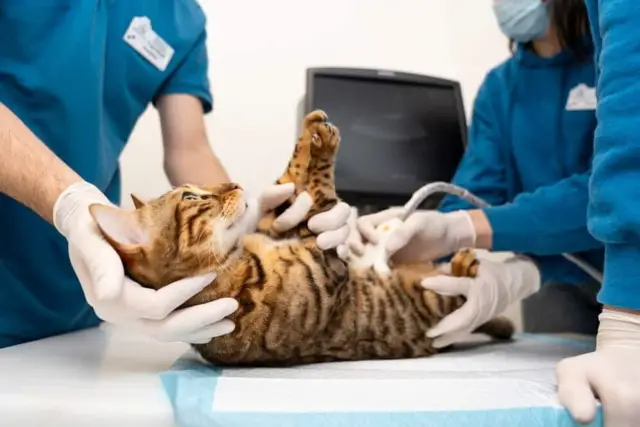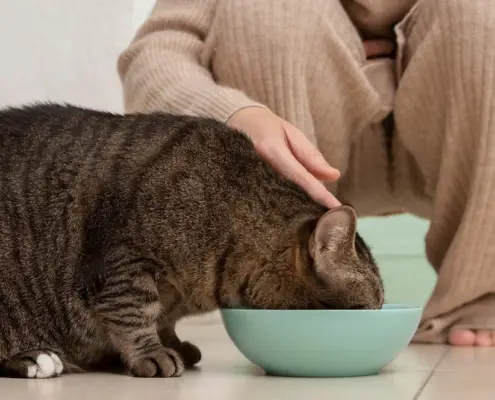
Zoonosis, the transmission of diseases from animals to humans, is a topic of growing concern for cat owners. However, it is equally important to understand that cats can also be affected by zoonotic diseases. Zoonotic diseases are caused by various pathogens such as bacteria, viruses, and parasites that can be transmitted between animals and humans. This comprehensive guide aims to provide cat owners with the necessary knowledge to prevent and manage potential zoonotic infections in their feline companions.
Common Zoonotic Diseases in Cats
Cats can contract several zoonotic diseases, including but not limited to:
- Toxoplasmosis: A parasitic infection caused by Toxoplasma gondii, which is commonly found in contaminated soil or undercooked meat.
- Ringworm: A fungal infection that can be transmitted to humans through direct contact with an infected cat’s skin or fur.
- Cat Scratch Disease: Caused by the bacterium Bartonella henselae, this disease is typically transmitted through cat scratches or bites.
- Rabies: A viral disease that affects the nervous system and can be transmitted to humans through bites or scratches from infected animals.
How Zoonotic Diseases are Transmitted to Cats
Zoonotic diseases can be transmitted to cats through various routes. The most common modes of transmission include:
- Direct Contact: Cats can contract zoonotic diseases through direct contact with infected animals or their bodily fluids. This can occur during fights, mating, or grooming sessions.
- Ingestion: Cats may consume contaminated food, water, or prey, leading to the ingestion of zoonotic pathogens.
- Vectors: Certain zoonotic diseases can be transmitted to cats through the bites of infected insects, such as fleas or ticks.
Preventive Measures for Zoonosis in Cats
Preventing zoonotic infections in cats requires a proactive approach. Here are some essential preventive measures that cat owners should consider:
- Proper Hygiene: Regularly clean your cat’s litter box, food and water bowls, and bedding to minimize the risk of zoonotic infections.
- Hand Hygiene: Wash your hands thoroughly after handling your cat, especially before eating or preparing food.
- Routine Vaccinations: Ensure your cat is up to date on all necessary vaccinations, as recommended by your veterinarian.
- Flea and Tick Control: Use appropriate flea and tick control products to prevent the transmission of zoonotic diseases carried by these vectors.
Identifying Symptoms of Zoonosis in Cats
Detecting early symptoms of zoonotic infections in cats is crucial for prompt diagnosis and treatment. While the specific symptoms may vary depending on the disease, some general signs to watch out for include:
- Change in Behavior: Cats may exhibit lethargy, loss of appetite, or increased aggression when suffering from a zoonotic infection.
- Digestive Issues: Diarrhea, vomiting, or constipation can be indicators of certain zoonotic diseases.
- Skin Abnormalities: Lesions, rashes, or excessive itching can be signs of zoonotic infections, such as ringworm.
Treating Zoonotic Infections in Cats
If you suspect your cat has contracted a zoonotic infection, it is crucial to seek veterinary care immediately. Treatment options may include:
- Medication: Depending on the specific zoonotic disease, your veterinarian may prescribe medications such as antibiotics, antiparasitics, or antifungals.
- Isolation: In some cases, infected cats may need to be isolated to prevent the spread of zoonotic diseases to other animals or humans.
- Supportive Care: Providing your cat with supportive care, such as a balanced diet, hydration, and a stress-free environment, can aid in their recovery.
Zoonosis Prevention for Cat Owners
As a responsible cat owner, you play a crucial role in preventing zoonotic infections. Here are some essential steps to consider:
- Regular Veterinary Check-ups: Schedule routine check-ups with your veterinarian to monitor your cat’s overall health and discuss preventive measures for zoonotic diseases.
- Proper Disposal of Waste: Dispose of your cat’s waste properly, following local regulations and guidelines.
- Indoor Living: Consider keeping your cat indoors to reduce their exposure to potential zoonotic pathogens.
Importance of Regular Veterinary Check-ups for Zoonosis Prevention
Regular veterinary check-ups are not only essential for the overall well-being of your cat but also for the prevention of zoonotic diseases. During these visits, your veterinarian can:
- Administer Vaccinations: Ensure your cat is up to date on all necessary vaccinations to protect against zoonotic diseases.
- Perform Routine Testing: Conduct tests to detect any underlying zoonotic infections or identify potential risk factors.
- Provide Preventive Treatments: Administer preventive treatments, such as deworming or parasite control, to reduce the risk of zoonotic infections.
Educating Children about Zoonosis and Cats
Children are particularly vulnerable to zoonotic infections due to their close interactions with cats. Educating children about zoonosis and cats is essential to prevent the transmission of diseases. Here are some key points to teach your children:
- Proper Handwashing: Teach children to wash their hands thoroughly after playing with cats or handling their belongings.
- Gentle Play: Encourage gentle play with cats and discourage rough handling, such as pulling their tail or ears, to minimize the risk of scratches or bites.
- Avoiding Contaminated Areas: Instruct children to avoid areas where cats eliminate waste and to never touch stray or unknown animals without adult supervision.
Conclusion
Understanding zoonosis for cats is crucial for every cat owner. By familiarizing themselves with common zoonotic diseases, their modes of transmission, and preventive measures, cat owners can ensure the well-being of their feline companions and protect themselves and their families from potential infections. Remember, regular veterinary check-ups, proper hygiene practices, and educating children are key components of a comprehensive approach to preventing and managing zoonotic diseases in cats. By taking these steps, you can provide a safe and healthy environment for both your cat and your family.
If you enjoyed my article, I would appreciate you sharing it with your network.

Sima Ndlebe
Sima writes for CatBuzz. He is interested in Cats, Health and Fitness, and Entrepreneurship.
Published: 11 October 2023
Related Articles
Disclaimer
The content found on CatBuzz.org is presented on an "as is" basis and is intended for general consumer information and education purposes only. Any utilization of this information is voluntary and solely at the user's own risk.
None of the articles or content should be regarded as, or used in place of, veterinary medical advice, diagnosis, or treatment. The information provided on the website is purely for educational and informational intentions and should not be considered a substitute for professional guidance from a veterinarian or other qualified expert. The articles are designed to inform consumers about veterinary healthcare and medical matters that may impact their cat's daily life. It should be noted that this website and its services do not constitute the practice of any form of veterinary medical advice, diagnosis, or treatment. CatBuzz.org explicitly disclaims any liability for any direct or indirect damages or losses that may arise from the use of or reliance on the information contained within the content.
Consumers must consult a veterinarian, veterinary specialist, or another qualified veterinary healthcare provider when seeking advice regarding their cat's health or medical conditions. It is important not to ignore, avoid, or postpone seeking medical advice from a veterinarian or other qualified veterinary healthcare provider solely based on information obtained from this website. If you believe that your cat may be experiencing a medical issue or condition, it is imperative to promptly contact a qualified veterinary healthcare professional.



